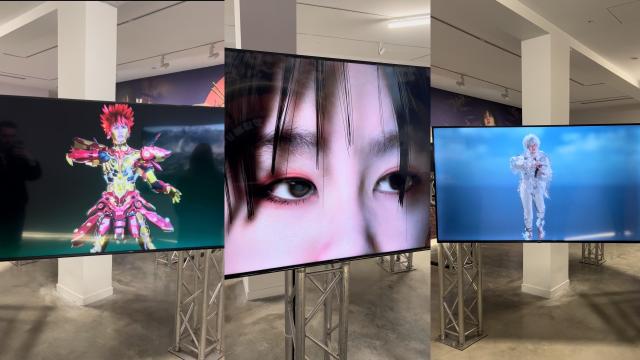The Museum of Contemporary Art (MCA) Australia has a new exhibition that’s encouraging those who visit to step into the infinite possibilities of the future whilst reflecting on where our present reality places us as human beings. It’s called Ultra Unreal and it’s all about reflecting upon the relevance of mythmaking today, its role in navigating complex realities and how it can create new worlds.
Drawing heavy inspiration from Ning Ken’s theory of the ultra-unreal, the new exhibition dissects how mythologies have been presented in the past and how they can be used to reveal hidden pasts whilst reimagining the future.
Ultra Unreal is a multi-sensory exhibition that pulls influences from religion, neuroscience, ecology, artificial intelligence, myth, gaming and queer club cultures. It features the works of six artists and collectives from around the globe, each one with a worldbuilding practice that connects to nightlife ecosystems.
The artists featured are Club Ate (Sydney), Korakrit Arunanondchai and Alex Gvojic (Bangkok and New York), Lawrence Lek (London), Lu Yang (Shanghai) and Saeborg (Tokyo).
From immersive installations, digital environments, costume making, lasers, sets and inflatable worlds, performances, film screenings and computer-generated imagery (CGI) and augmented reality (AR) creations, the Ultra Unreal exhibition really does feel like you’ve stepped into a dizzying future of wonderous (and somewhat terrifying) possibilities.
Although the exhibition uses high-level technology to create images of the future, all the works are still deeply rooted in the artists’ individual experiences and politics. The worlds they have created are populated by hybrid creatures and genderfluid beings, most of them representing extended versions of themselves.
Club Ate and Saeborg’s works have emerged directly from the politics of the dancefloor and showcase the vibrancy of underground queer nightclub communities. Arunanondchai and Gvojic, Lek and Lu’s works are similarly influenced by late-night energies but have a heavier focus on Sinofuturism, reincarnation, empathy and nonhuman consciousness.
Gizmodo Australia recently had the pleasure of attending the media preview for the new exhibition and it was wild, let’s check it out.
Club Ate

Club Ate’s video, sound and textile installation Ang Idol Ko / You are My Idol (2022) is inspired by Filipinx mythologies and club cultures as a way to evoke queer, trans and animist idols for people today.
According to the MCA, this Ultra Unreal installation combines ancestral figures from the Buwaya (crocodile) and Kinnari (bird) mythologies and draws on historical accounts of the Babaylan (queer and trans shamans in the Philippines) who act as intermediaries between visible and invisible worlds.
It’s a breathtaking installation, with the giant screens making you feel incredibly insignificant to these god-like figures as you watch them feast and share mythologies of queer strength and power.
The Sydney-based artists Bhenji Ra and Justin Shoulder (who formed Club Ate in 2014) sought to collapse boundaries between “art, club, community, dance and politics”.
Korakrit Arunanondchai and Alex Gvojic
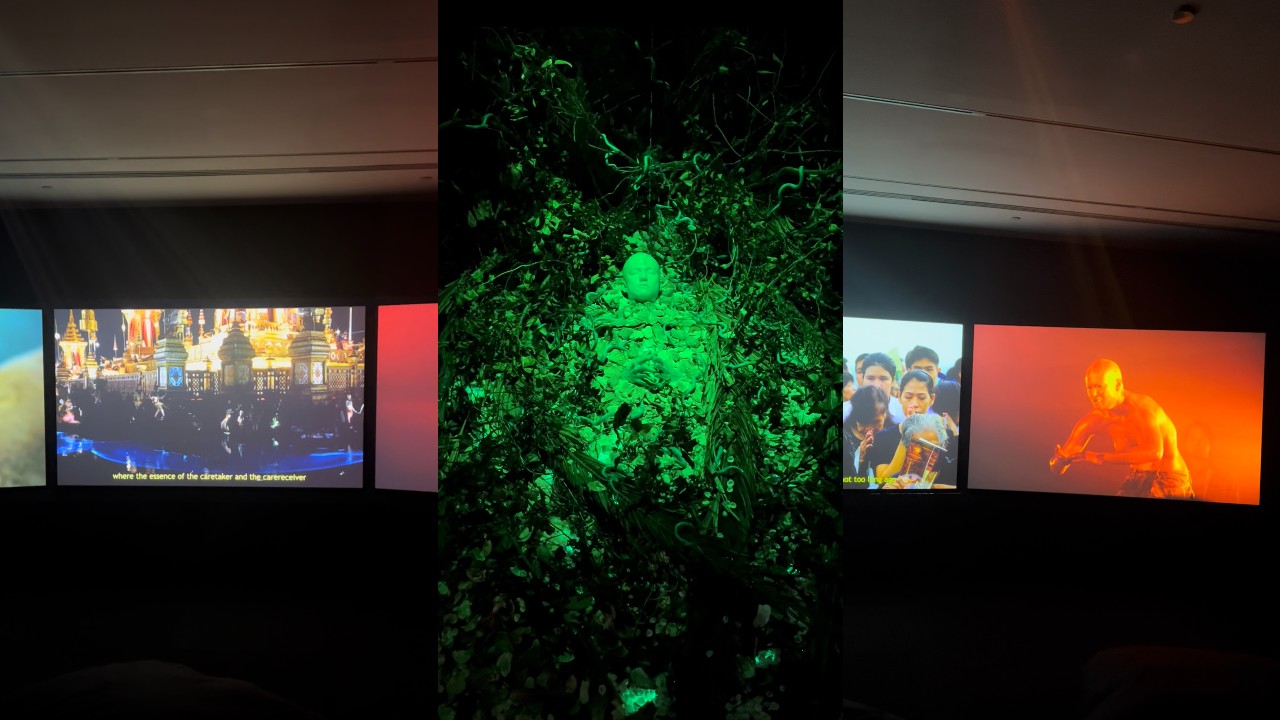
Arunanondchai collaborated with artist and cinematographer Alex Gvojic to bring their Ultra Unreal installation to life. Known for interweaving performance, painting, video and sculpture to create their works, Arunanondchai has been building his cosmology for more than ten years.
Painting with history in a room filled with people with funny names (2012-) has been made from a sprawling archive of audio-visual material and features a cast of characters, including that of a fictional Thai artist (played by Arunanondchai), a Garuda spirit named Chantri (voice by his mother and sometimes embodied by a drone) and the Naga, a mythical serpent that sometimes takes human form (played by Tosh Basco).
Arunanondchai explained to the MCA that this fifth chapter examines “unseen forces shaping our reality, and relationships between humans and more-than-human beings in the context of contemporary Thai mythology.”
What I found the most compelling, apart from the burial sculpture with green lasers pointed at it, was that the video was shot in the same Northern Thailand town where the youth soccer team were trapped in a cave. This was the point where Thailand wanted to reshape its presentation to the world which inspired Arunanondchai to explore how propaganda, mythology and politics combine to create new worlds.
Lawrence Lek
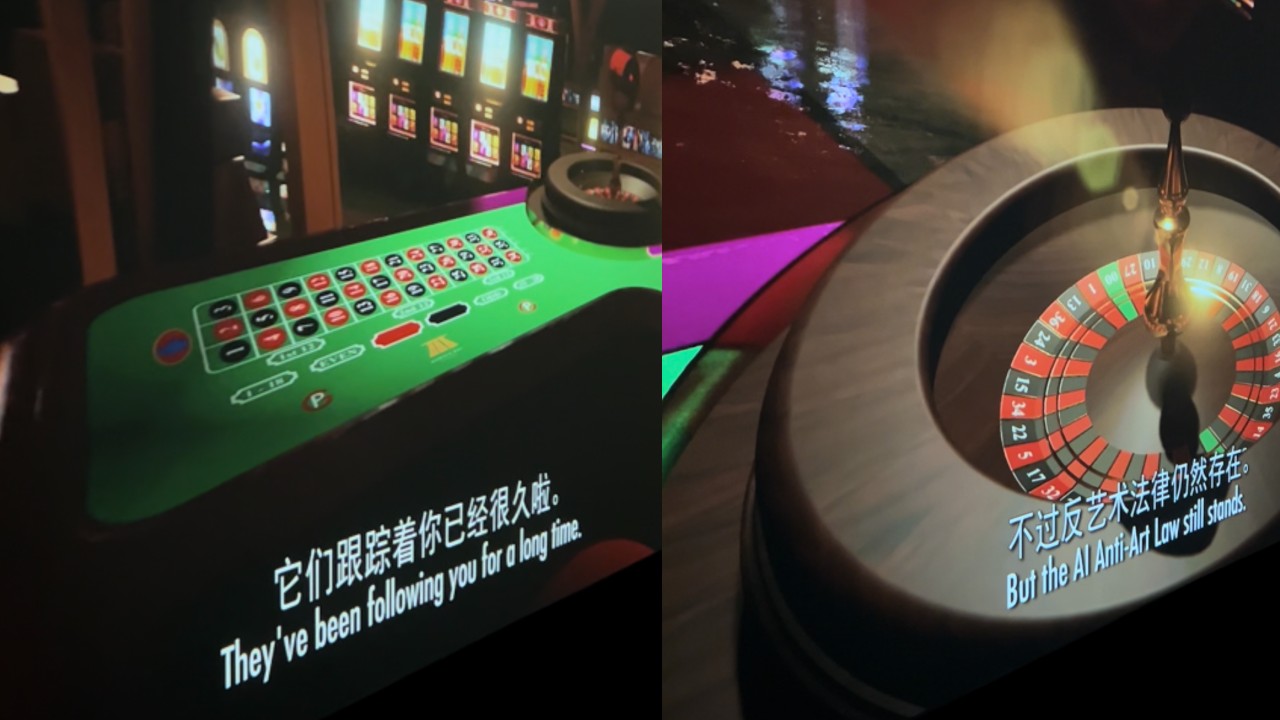
Lek is a London-based artist and musician who draws on his background in architecture to create artificial worlds by using gaming software and CGI. His films often explore the relationship between geopolitics and technology.
His video essay installation for Ultra Unreal, titled Sinofuturism (1839-2046 AD), forms part of his larger body of work in developing a ‘Sinofuturist cinematic universe.’ It’s set in the future in Singapore in 2065 (a century of the nation’s independence) after the oceans have risen as a result of climate change.
The essay is narrated by and is from the perspective of a weather satellite who gained sentience and travelled to earth after watching us destroy the planet and is traumatised.
According to Lek, the video essay combines elements of ‘science fiction, historical fantasy, documentary melodrama and social realism with Chinese cosmologies to critique the present-day dilemmas of China, and the people of its diaspora.’
Something that Lek investigates in the video, which is something I never really considered before, was that depictions of China’s industrial workforce is very similar to that of AI depictions in Western media. Both are often portrayed as being faceless, otherworldly and incomprehensible.
Through this, Lek identifies seven key stereotypes of Chines society: computing, copying, gaming, studying, addiction, labour and gambling and asks us, the viewers, to consider if Sinofuturism could be a form of AI.
Lu Yang
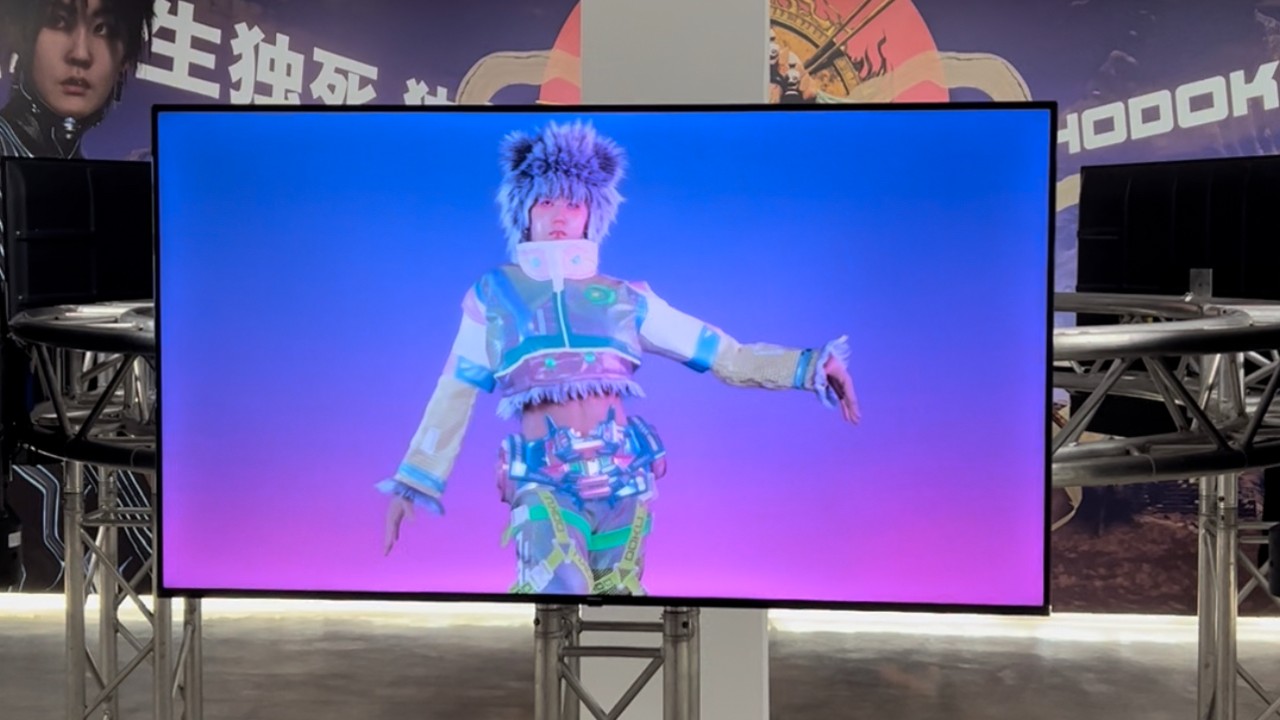
Yang is a Shanghai-based artist who has a deep fascination with mind-bending technology and the neuro-physiological foundations of consciousness. Yang’s Ultra Unreal installation tackles questions about life, death and rebirth by merging Buddhist thought and iconography with pop culture, neuroscience and biology.
Through collaborations with scientists, psychologists, music producers, tattoo artists, designers, pop stars and robotics companies to create their work, Yang’s exhibit incorporates a range of media technology like LED displays of 3D animations, motion capture and gaming design. Leading to Yang’s avatar creation, DOKU, which looks remarkably like its creator but exists in a virtual world without gender.
Yang is asking viewers to consider whether or not ‘consciousness can be manufactured and sustained beyond the life of the individual.’
Saeborg
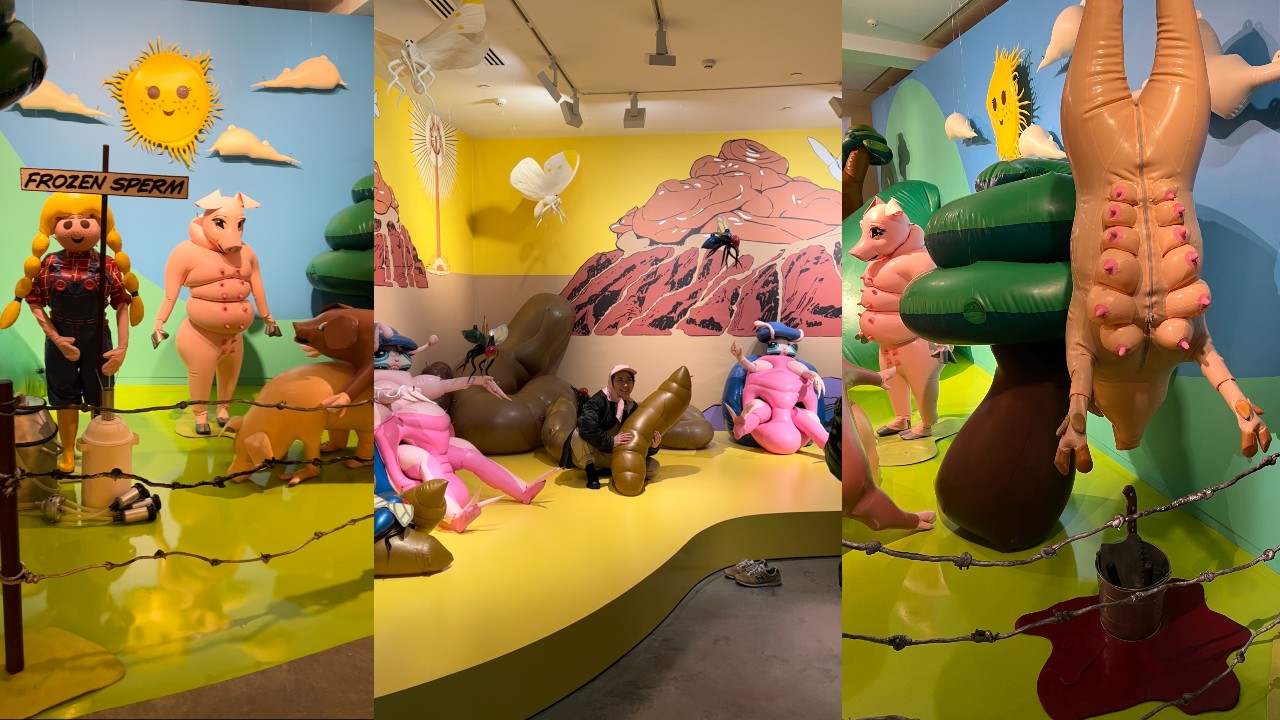
Saeborg describes themselves as “an imperfect cyborg – half human, half toy,” whose work emerged out of the queer club scene in Tokyo. Originally, their work was a costume for Department H, a fetish party and nightclub.
I can safely say that Saeborg’s installation is one of the most confusing, slightly terrifying, yet enlighting things you’ll see in your lifetime.
For their Ultra Unreal installation, Saeborg has created inflatable worlds made from latex with creatures that we as humans consider the lowest beings of our ecosystem.
Pootopia showcases an inflatable dung beetle and reminds us of the importance of them in our ecosystem. It’s actually rather cute.
Slaughterhouse 17, on the other hand, is confronting and a dark commentary on gender roles and stereotypes in Japan. By using livestock as an analogy for the expectations of women, Saeborg’s installation is actually a set where performers are dressed in inflatable body suits and bring the characters to life.
What looks like a child’s wonderland at first glance is actually a deeply insightful take on how our society operates within hierarchies.
I highly recommend anyone who is in Sydney to check out MCA’s Ultra Unreal exhibition. It allows you to step in various different worlds each with a unique perspective on how the artist sees society around them and where we as humans are going to end up. The blending of technology with physical art is breathtaking and the seamless use of CGI, AR and AI showcases technology’s potent power on our civilisation and leaves you questioning how much of ourselves are actually us, and how much is determined by myths and the forces around us.
It’s also a unique opportunity to enter the minds of cutting-edge artists who have a completely different perspective to you and can offer you different ways to see how our realities have been built and how that has affected different groups of people. Walking through the exhibition, I was left with a profound calmness. A calmness I can only describe as being at peace with not having total control over the present but having control on how I perceive it.
Ultra Unreal is open to the public from July 22 to October 2, 2022. Entry is free.
